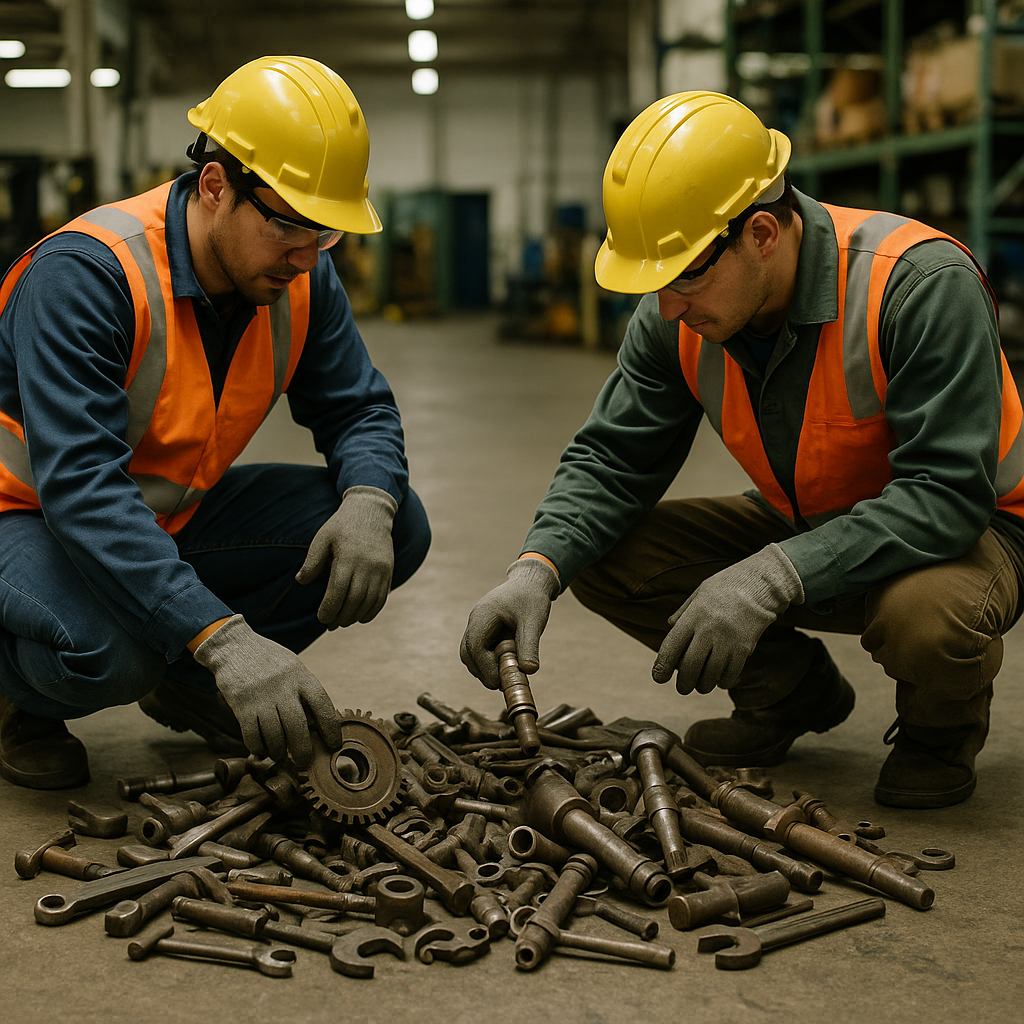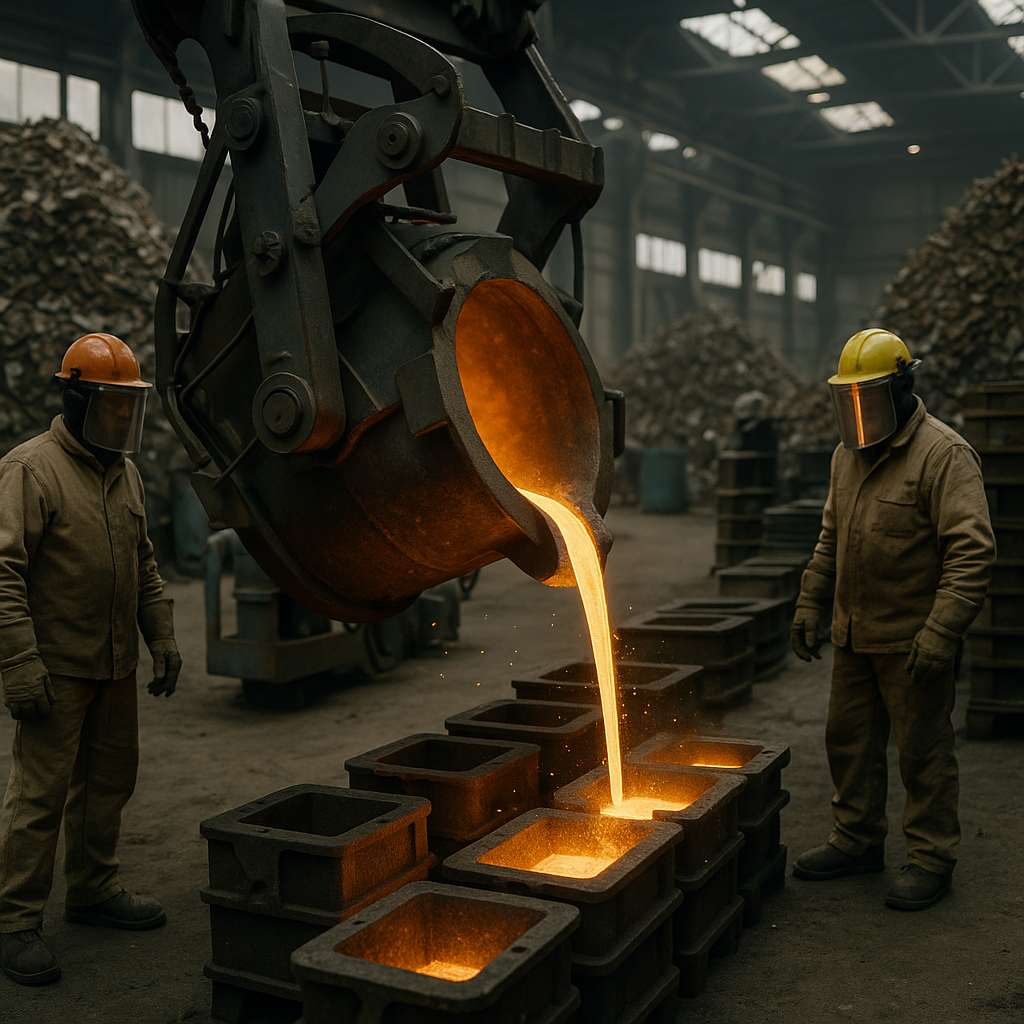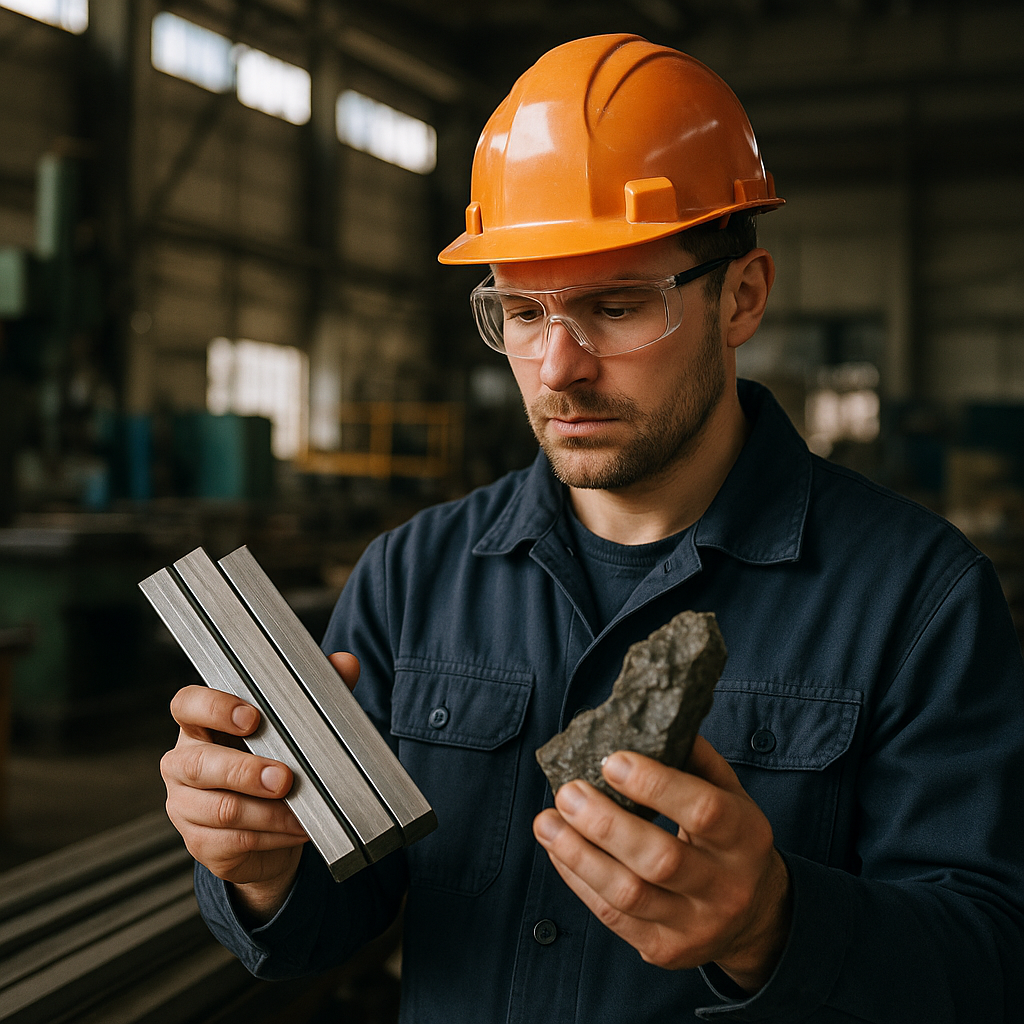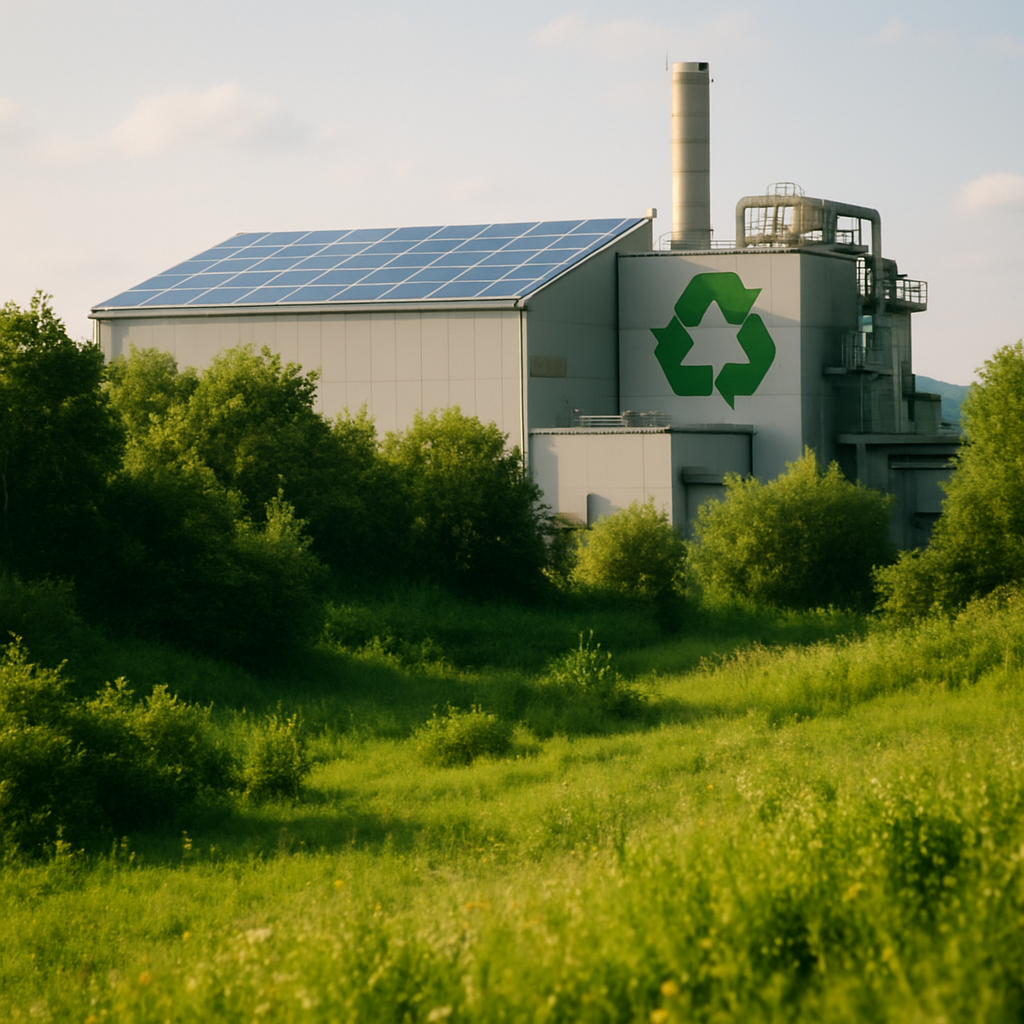5901 Botham Jean Blvd, Dallas, TX 75215
Molybdenum Recycling: A Guide to the Process, Sources & Benefits
October 21, 2025Of the 330,000 tonnes of molybdenum used worldwide each year, approximately 86,000 tonnes come from recycled sources. This notable 26% recycling rate highlights the essential role that molybdenum recycling plays in our global economy and environment. As a refractory metal with unique properties, molybdenum is indispensable in modern industry and technology.
Molybdenum recycling is a crucial component of the circular economy. The process involves recovering the metal from spent catalysts, industrial waste, and alloy scraps, transforming discarded materials into valuable resources. This practice significantly reduces the pressure on virgin molybdenum ore deposits, many of which face declining quality and limited reserves.
Beyond conserving resources, molybdenum recycling provides considerable environmental benefits. It reduces energy consumption compared to primary production, cuts greenhouse gas emissions, and minimizes the environmental damage associated with mining. For industries relying on this versatile metal, recycling offers a cost-effective, sustainable alternative that supports both economic growth and environmental stewardship.
What are the Main Sources of Recyclable Molybdenum?

Recyclable molybdenum is vital in meeting global demand and promoting sustainability in the metals industry. About one-quarter of molybdenum used annually comes from recycled sources, making scrap collection and processing essential to the supply chain. The recovery of this valuable metal occurs through several distinct pathways and material sources.
Steel and Alloy Production Scrap
The largest source of recyclable molybdenum comes from steel and metal alloy production, categorized into several sub-types:
- Revert Scrap: Production remnants generated at steel mills, such as cut-off ends and edge trimmings, return to the furnace quickly after generation.
- New Scrap: Generated by steel mill customers like service centers and fabricators, it includes manufacturing leftovers rich in molybdenum. This scrap usually returns to recycling streams within six months.
- Old Scrap: These are products that have reached the end of their useful life, including demolished buildings and obsolete manufacturing equipment. The age of this scrap varies, from 5 years for some consumer goods to over 50 years for building materials.
Specialized Molybdenum Forms
High-value molybdenum also comes from concentrated sources, including:
- Molybdenum Solids: Plates, bars, sheets, and other pure or high-percentage molybdenum items are recycled directly for their molybdenum content.
- Turnings and Powders: Machine shops fabricate molybdenum parts, producing chips, shavings, and fine powder residues that are valuable in the recycling stream.
- Spent Catalysts: Molybdenum-containing catalysts become significant recycling sources after use in chemical and refining processes, sometimes used in blends for stainless steel and specialized alloy production.
Industry-Specific Sources
Different industries generate distinctive types of recyclable molybdenum:
- Superalloys and Tool Steels: The high-speed tool steel and nickel-based superalloy industries depend heavily on molybdenum recycling, with over 50% of their input coming from scrap. These materials often contain higher percentages of molybdenum.
- Stainless Steel: About 40% of recycled molybdenum is used in stainless steel production. The Type 316 stainless typically contains about 38% recycled molybdenum.
- Industrial Equipment: Chamber scrap from high-temperature industrial environments often contains recoverable molybdenum, including parts from furnaces, chemical processing equipment, and other specialized machinery.
Sludges and Residues
Less obvious but valuable sources include:
- Industrial Byproducts: Sludges and residues from manufacturing processes often contain recoverable molybdenum.
- Chemical Solutions: Molybdenum-laden solutions, such as those generated during tungsten filament production, can be processed to recover molybdenum.
- Refinery Waste: Low-grade molybdenum refinery scraps, though challenging, contain recoverable molybdenum that specialized recyclers can extract efficiently.
Recycling molybdenum from these diverse sources not only conserves natural resources but also requires less energy than primary production and emits fewer emissions. Recycling efficiency continues to improve as technology advances and awareness of its benefits grows.
How is the Molybdenum Recycling Process Carried Out?

The molybdenum recycling process transforms discarded materials into valuable resources through a systematic series of steps. These stages ensure efficient recovery and reuse of this important metal.
Collection and Identification
The initial step involves gathering molybdenum-bearing materials from diverse sources, including spent catalysts from chemical plants, trimmings from fabrication processes, and end-of-life products containing molybdenum alloys.
Various types of molybdenum scrap enter the recycling stream, primarily from molybdenum-bearing steel and alloys, while other sources include molybdenum solids, turnings, catalysts, and industrial compounds.
Sorting and Preparation
After collection, scrap dealers categorize the materials based on composition and physical characteristics. This step is crucial for appropriate processing.
Scrap dealers employ specialized equipment to ready materials for recycling. Shredders break down large items, separating metals from other materials. Hydraulic shears, with chromium-nickel-molybdenum alloy steel blades, cut heavy plate and structural steel. Baling presses compact scrap into dense bundles, reducing volume and shipping costs.
Processing Techniques
The processing stage uses various techniques depending on the molybdenum-bearing material type:
For metallic molybdenum scrap, mechanical processing methods like crushing and abrading remove oxide films, preparing the material for melting or further refinement.
Thermal treatments, such as roasting and calcining, process molybdenum catalysts and compounds. These high-temperature methods convert molybdenum into more recoverable forms; for instance, roasting transforms molybdenum sulfides into oxides.
Chemical extraction involves leaching with acids or alkaline solutions to dissolve molybdenum content. Precipitation, solvent extraction, and ion exchange then separate molybdenum from other elements. These methods are particularly effective for processing spent catalysts and complex molybdenum-bearing materials.
Refinement and Reintroduction
The final stage refines the recovered molybdenum into marketable products, which may include molybdenum oxide, ferromolybdenum, or pure molybdenum metal, based on intended applications.
The refined molybdenum is then reintroduced into the manufacturing stream, serving as raw material for steel production, catalysts, lubricants, and other applications. This completes the recycling loop and contributes to resource conservation.
Specialized Facilities and Equipment
Different molybdenum-bearing materials require specialized handling. Companies like INMETCO and Langeloth Metallurgical use roasting processes at their facilities to recover molybdenum from secondary materials. Other specialized processors focus on specific molybdenum scrap types, such as turnings, electrodes, and spent catalysts.
Advanced recycling facilities utilize specialized equipment for handling molybdenum-bearing materials. For instance, ring mills remove oxide films from molybdenum turnings and chips, preparing them for vacuum melting. Some facilities use batch-process furnaces to produce molybdenum oxide from scrap.
The recycling process’s complexity depends on the source material’s purity and form. Pure molybdenum scrap requires less processing than complex alloys or contaminated materials, needing more extensive treatment to recover the molybdenum content.
| Source Material | Recycling Technique | Attributes/Recovery Rate |
|---|---|---|
| Spent Catalysts | Chemical Extraction and Stripping with Alamine 336 and NaOH | High efficiency; > 98% molybdenum recovery |
| Steel and Alloy Scrap | Mechanical and Melting Processes | 60% used in stainless steel production |
| Molybdenum Solids | Direct Melting and Refining | High-purity recovery, often used in sputtering targets |
| Molybdenum Turnings and Powders | Mechanical Processing followed by Melting | Rich in molybdenum content, highly valuable |
These recycling processes not only conserve valuable resources but also reduce environmental impact. Recycling molybdenum requires less energy than primary production and generates fewer emissions, making it an environmentally responsible choice for metal recovery.
What are the Benefits and Challenges of Molybdenum Recycling?

Molybdenum recycling offers significant environmental and economic advantages while presenting unique technical challenges. This versatile metal, essential in steels and specialized alloys, becomes even more valuable when considering its recyclability in the circular economy.
Benefits of Molybdenum Recycling
Molybdenum recycling substantially reduces the environmental footprint associated with primary production. By curtailing the need for virgin molybdenum extraction, recycling lowers the environmental impact of mining activities, including land use, water pollution, and energy consumption.
Resource conservation is a primary benefit. Studies show that approximately 25% of all molybdenum used annually comes from recycled sources. This conservation ensures the continued availability of this valuable resource for future generations while promoting a circular economy where waste becomes valuable input.
From an economic perspective, recovered molybdenum from recycled materials offers a cost-effective alternative to virgin sources. This benefits manufacturers incorporating molybdenum and consumers purchasing the finished goods.
Recycling molybdenum scrap generally requires less energy than extracting and processing virgin ores. A recent study found that in stainless steel production, approximately 39% of molybdenum comes from recycled sources, rising to 50% in tool and high-speed steels.
Challenges in Molybdenum Recycling
Despite these benefits, molybdenum recycling faces several technical hurdles. Efficient sorting technologies remain a significant challenge, as molybdenum often appears in complex alloys and compounds, complicating separation. The industry needs more advanced systems to improve recycling rates.
Contamination poses another major obstacle. Impurities or unwanted elements in molybdenum scrap can compromise the quality of the recycled material. This is particularly true for scrap from end-of-life products where molybdenum may be combined with other materials.
Market fluctuations also impact the economics of molybdenum recycling. Lower scrap molybdenum prices can reduce the financial incentive for collection and processing, disrupting the steady supply of recycled molybdenum.
The recycling efficiency for old scrap (end-of-life products) is currently around 30%, revealing significant potential for improvement in collection systems, processing technologies, and market structures to boost recycling rates.
| Sector | Recycling Rate (%) | Additional Information |
|---|---|---|
| Global Average | 25% | Overall molybdenum recycling rate |
| Steel Sector | 39% | Proportion of recycled molybdenum in stainless steel production |
| Tool and High-Speed Steels | 50% | Proportion of recycled molybdenum input |
| Europe | 35% | Region with significant molybdenum recycling |
| Developing Economies | 15% | Lower recycling rates due to infrastructure and technology gaps |
Future Outlook for Molybdenum Recycling
Experts project that molybdenum recycling will grow to approximately 110,000 tonnes by 2025, representing about 27% of global use. By 2030, recycled molybdenum could account for 35% of total use, driven by maturing economies in developing countries and an increased focus on recycling valuable materials.
Investments in research and development for advanced recycling technologies will likely enhance efficiency and cost-effectiveness. Developing robust collection infrastructure and promoting responsible waste management practices will further strengthen the molybdenum recycling ecosystem.
What is the Future Outlook for Molybdenum Recycling?

The future of molybdenum recycling is closely linked to the performance of the steel industry. As specialty and carbon steelmaking evolve, opportunities for molybdenum recovery will also expand. The industry faces both promising developments and notable challenges that will shape its trajectory in the coming years.
Electric arc furnaces are a key area for molybdenum recycling potential. These furnaces primarily use scrap metal as feedstock, providing an ideal environment for recycling molybdenum from steel products. With global steel production increasingly shifting toward electric arc furnace technology, particularly in regions focused on reducing carbon emissions, the infrastructure for molybdenum recovery will naturally expand.
Economic Factors Influencing Recycling Rates
Despite positive trends in the steel industry, the relatively low market value of molybdenum creates economic hurdles for dedicated recycling programs. Unlike precious metals, which command high prices even in small quantities, molybdenum’s moderate value means recycling efforts must achieve significant scale to remain profitable.
The global molybdenum market is projected to grow from $5.11 billion in 2025 to approximately $6.14 billion by 2029, representing a compound annual growth rate of 4.7%. This steady but modest growth may limit investment in specialized molybdenum recovery technologies unless efficiency improvements can reduce processing costs.
Current recycling rates for molybdenum hover around 20% globally. Industry experts suggest this figure needs to increase to approximately 80% for truly sustainable extraction rates. Bridging this gap will require coordinated efforts across the value chain.
Technological Innovations Driving Progress
Technological advancements offer the most promising path forward for improving molybdenum recycling economics. Innovations in sorting technologies, metallurgical processes, and waste stream management are gradually making molybdenum recovery more feasible from previously uneconomical sources.
Recycling technology firms are developing advanced separation techniques using artificial intelligence and machine learning to identify and sort molybdenum-containing materials. These systems can detect even small quantities of the metal in mixed waste streams, potentially opening new recovery pathways.
Additionally, research into biohydrometallurgical processes shows promise for extracting molybdenum from low-concentration sources using specialized microorganisms. These methods could potentially operate at lower temperatures and with fewer chemical inputs than conventional approaches, enhancing both the environmental profile and the economics of molybdenum recycling.
Regulatory Environment and Sustainability Pressures
Environmental regulations will increasingly influence molybdenum recycling practices. As governments worldwide implement stricter waste management policies and circular economy initiatives, manufacturers using molybdenum may face pressure to establish take-back programs or contribute to recycling infrastructure.
The European Union’s Circular Economy Action Plan and similar frameworks being adopted globally signal a regulatory environment increasingly favorable to metals recycling. Extended producer responsibility requirements may eventually mandate specific recovery rates for critical minerals, including molybdenum.
Corporate sustainability commitments are also driving improvements in molybdenum recycling. Steel manufacturers and end users in sectors like automotive and construction are setting targets for recycled content and material efficiency, indirectly benefiting molybdenum recovery rates.
Market Dynamics and Supply Chain Considerations
Global supply chain vulnerabilities exposed during recent disruptions have heightened interest in recycling as a means of securing domestic molybdenum supplies. Countries with limited natural deposits but significant manufacturing capacity are particularly interested in improving recovery rates.
China remains the dominant player in both molybdenum production and consumption, with its market expected to grow at a CAGR of 6.5% through 2035. As the country implements increasingly stringent environmental regulations, recycling practices developed there will likely influence global standards and technologies.
The growth of electric vehicles and renewable energy infrastructure creates new end markets for molybdenum, potentially affecting recycling economics. While these sectors increase demand, they also introduce new product designs that could either facilitate or complicate future recycling efforts, depending on how manufacturers address recyclability in their designs.
Conclusion: The Role of Molybdenum Recycling in a Sustainable Future

Molybdenum recycling is crucial for sustainable resource management today. The process significantly reduces the need for virgin molybdenum extraction, diminishing the environmental impacts of mining, such as land disruption, water pollution, and energy use. This conservation ensures the resource remains available for future generations while promoting a circular economy where waste becomes valuable assets.
Currently, about 26% of global molybdenum is sourced from recycling, presenting substantial growth potential. In some applications, like stainless steel production, recycled molybdenum accounts for 39% of usage, and up to 50% in tool and high-speed steels. Continued technological advancements and increased industry adoption of circular economy principles will make molybdenum recycling even more vital for resource conservation, emissions reduction, and sustainable industrial practices. Businesses and organizations aiming to boost their sustainability efforts while managing valuable metal resources can contact Okon Recycling at 214-717-4083.
